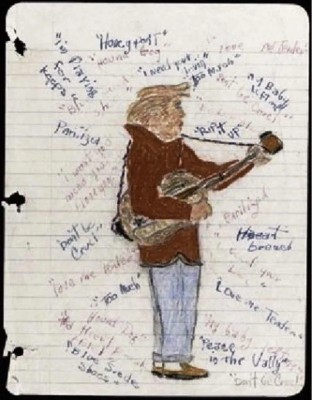The Inventor of the Incubator Displayed Premature Babies in a Circus Attraction
Imagine nurses in starched white uniforms and doctors in crisp medical coats tending to tiny infants in glass and steel incubators. These babies, born prematurely and far below a healthy birth weight, were so small that regular stores didn’t sell clothes that fit them. Instead, nurses dressed them in dolls' clothes and knitted bonnets.
Table of Contents
A Carnival Exhibit with a Medical Purpose
Welcome to the "Living Babies in Incubators" exhibit at the 1933-34 Chicago World’s Fair! This remarkable $75,000 exhibit (about $1.4 million today) in patriotic red, white, and blue was the brainchild of Dr. Julius Hess and the legendary "incubator doctor," Martin Couney.
Couney, with his thinning gray hair and stooped posture, had spent over three decades running incubator exhibits, most famously at Coney Island. Desperate parents saw him as a savior for their "weakling" babies, whom mainstream medicine often overlooked. For Hess, this public exhibit was a new adventure outside the conventional hospital setting.
From Sideshow Attraction to Lifesaving Station
The exhibit was a huge hit! Hundreds of thousands paid 25 cents to marvel at the tiny miracles, making the exhibit one of the fair’s most popular attractions.
On July 25, 1934, Couney organized a heartwarming "Homecoming" for the 58 babies cared for the previous summer. Forty-one returned with their mothers, celebrating a miraculous reunion broadcast live on local radio. The exhibit, once seen as a mere sideshow, was now recognized as a life-saving station for premature infants from hospitals all over Chicago.
The Shocking Truth Behind Martin Couney’s Success
Despite the success, Couney’s career was always controversial. Some accused him of exploiting the babies for profit, but none of these complaints stuck. By the 1930s, Couney was finally being acknowledged as a medical pioneer. However, there was a shocking twist – Couney was not a qualified doctor! Despite his claims of studying in Leipzig and Berlin, no records confirmed his medical education.
Martin Couney's Legacy of Compassion and Controversy
Couney’s care for all babies, regardless of race or class, was progressive for his time. He didn’t charge parents a penny, covering the costs through entrance fees. Leading pediatricians, unaware of his lack of formal qualifications, collaborated with Couney and studied his methods, further solidifying his reputation.
Couney’s story is a testament to his incredible impact on American neonatal care. Dr. Lawrence Gartner from the University of Chicago calls Couney a significant figure in medical history, respected by the medical community of his time. Couney claimed to have saved around 6,500 of the 8,000 babies he cared for – a number that, though unverifiable, reflects his undeniable influence.
Kathy Meyer, one of Couney’s success stories, was born eight weeks premature in 1939. When her parents couldn’t afford hospital care, Couney’s incubator ambulance came to the rescue. Meyer credits Couney with her survival and that of her entire family, calling him a hero.
Martin Couney, the sideshow doctor, may not have had the credentials, but he had the heart and ingenuity to save thousands of lives, forever changing the course of neonatal medicine.
Get Free Gifts & Best Stories!
Join our newsletter to get our top stories of the month and free merch.
- 📚 Cool Stories: Read stories you won’t find in textbooks.
- 🎁 Free Gifts: Get exclusive stickers, t-shirts, and more!
Only 1 email a month. No spam, we promise!

